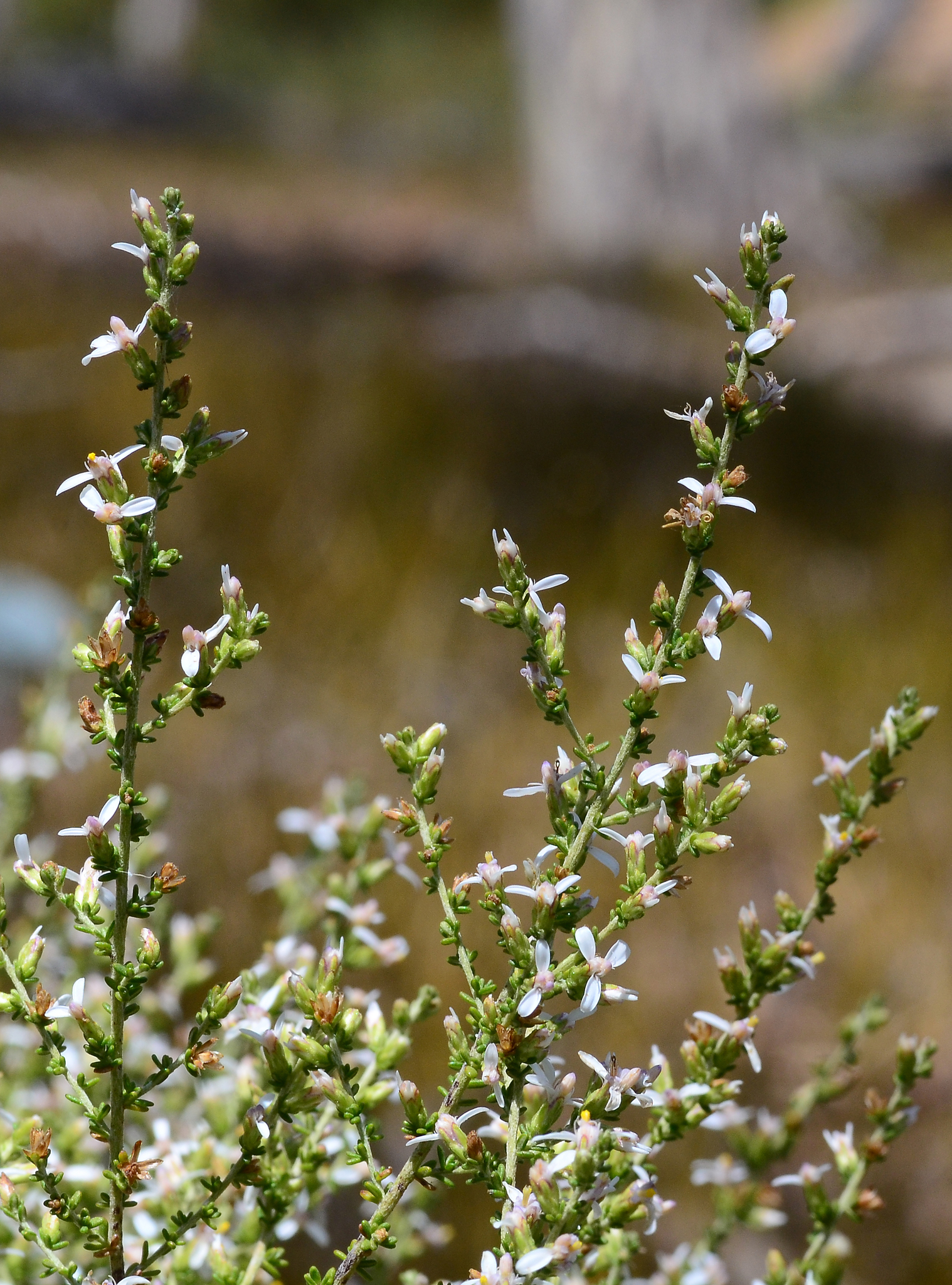
Probably after Adam Olearius (1603–71), a German botanist.
Shrubs or trees, glabrous to hairy. Stems erect or ascending, usually much-branched. Leaves along stems, alternate or opposite, margins entire or toothed, sessile or petiolate. Capitula usually radiate, rarely diskiform or diskoid, axillary or terminal, solitary or in corymbs or panicles, with or without stalks. Involucral bracts in several rows, overlapping, unequal. Receptacle pitted, flat or convex. Ray florets female, usually ligulate, white, violet, blue or purple. Disk florets bisexual, tubular, yellow or rarely purple. Achenes cylindrical or slightly compressed, ribbed, hairy or glabrous. Pappus of many barbed bristles.
Unusual for the genus is O. paniculata (J.R. Forst. &G. Forst.) Druce from New Zealand, a shrub or tree with diskoid capitula in pyramidal panicles in which each capitulum contains a single white tubular floret.
Woody shrubs or small trees; capitula usually with a single row of white or purplish ligulate florets.
About 130 species from Australia, New Guinea and New Zealand.
Source: (2002). Dahlia. In: . Horticultural Flora of South-eastern Australia. Volume 4. Flowering plants. Dicotyledons. Part 3. The identification of garden and cultivated plants. University of New South Wales Press.
